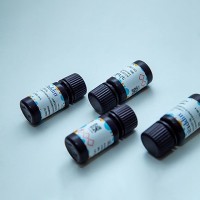Membrane Permeabilization with Bacterial Toxins
互联网
632
Many cell functions are controlled by molecular signals (hormones, neurotransmitters, and so forth) that interact with cell-surface receptors and trigger specific intracellular responses. Intracellular signaling can be difficult to study in isolated, purified systems, because these events depend on cellular architecture to a large extent. In intact cells, access to intracellular systems is limited by the restricted permeability of the surface membrane (plasma membrane). Much useful information can be obtained when the macromolecular elements of intracellular signaling are made accessible through a plasma membrane that is permeable to small (<1000 dalton), but not large molecules. For example, the nucleotide requirements (ATP, GTP, and so on) of exocytosis were assessed in cells made permeable to such molecules (1 –3 ). Such permeabilized cells are also useful for studying processes modulated by guanine-nucleotide-binding proteins (G-proteins) (1 –4 ).









